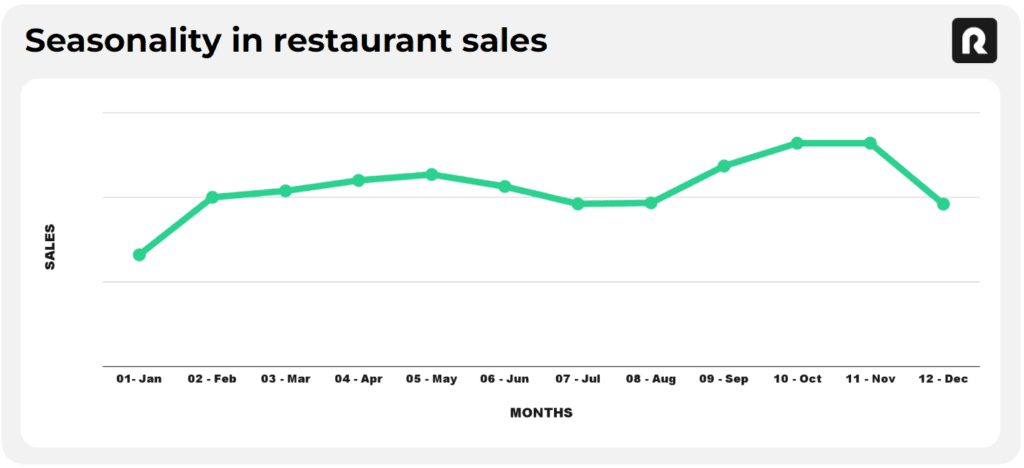How to combat seasonal buying cycles in restaurants

Riddle me this: why is it that revenue-generating teams selling into the hospitality industry typically need to ramp sales at a time when restaurants couldn’t be more distracted or disinterested?
While front-of-house teams get trained on LTOs and new store hours, you’re likely thinking of the fast-approaching end of month, quarter, or year. You make your account list, check it twice, then identify which deal will have the greatest sales potential.
But why should restaurants care to buy your product now? Especially in the midst of the massive chaos bomb (to word it nicely) called the holiday season.
Here’s another complexity: consumer behavior is changing yet again. As it stands today, Black Box Intelligence reports that year-over-year (YoY) same-store sales and traffic experienced the fifth consecutive month of negative growth. Consumers are reducing their spending while food and labor costs continue to rise and negatively impact restaurant performance. An unwelcome dichotomy between what consumers and restaurants want/need, especially as we head into the holiday season.
All of a sudden, the viability of reaching your quota seems more aspirational than achievable. Let’s fix that. We’ll walk through two ways to combat seasonal buying cycles and economic downturns so the unpredictability of market health becomes less volatile to your sales performance. Spoiler, you can either fight their objection, or accept it.

Fight it
What makes great sales reps stand out from ‘good’ or ‘just okay’: examining your target customer’s changing needs and adopting severe agility into your sales strategy.
- Conversationally, approach: “I know you’re slammed, but so are all successful restaurants. If you think there’s going to be a better, slower time in the future, I’m telling you that the best restaurants (like yours) are always going to be busy. What I’m asking is whether or not there’s value in what we offer. If so, and if we do what our customers tell us we do best, could we find the time/person/resources to make this happen now without grinding your operations to a halt?”
- Strategically, overcome objections: Offer quick and simple onboarding that doesn’t pull them away from their operations. “We have an implementation team that knows restaurants, and will make sure this is quick, easy, and with minimal lift from your team.”
Accept it
Stop right there – this is not ‘accepting’ defeat. When you approach a conversation where you have to ‘accept fate’, you do so in a way that keeps the door open.
- Conversationally, approach: “I know you’re about to start your holiday rush. Here’s the thing: everyone is going to want to get started with us in January when they’ve slowed down, and this means our implementation team is going to be overwhelmed. Simply put, we may not be able to guarantee that everyone wanting to get started will have a place in line. If you want to make sure we do this and don’t punt, we need to firm this up now (Q4) with a guaranteed start date in January. Is that realistic?”
- Strategically, overcome objections: Don’t mistake the first ‘no’ as a lost opportunity. As a best practice, make them give you the same objection twice – but only accept it the second time. In practice this may look like a restaurant operator responding “this isn’t a good time”, and if this is a repeat response in your outreach then your focus should be on defining the next viable date to connect. This could be weeks or months, but ultimately there has never been a time in which you gave someone the space they asked for and they ultimately regretted it.
Depending on the trajectory of the conversation, you should have each approach ready in your toolbelt. You’ve got to understand the market at a moment’s notice and over time, coupled with your ICP and the true value of your solution in order to convey the critical need your prospect has.
Value is a drink best served cold.


